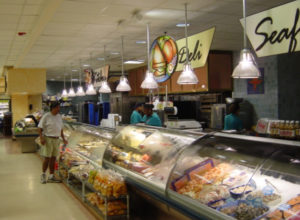 (First published in the Philippine Online Chronicles, November 19, 2011)
(First published in the Philippine Online Chronicles, November 19, 2011)
One of the biggest problems of a new, unknown business is finding a ready, steady market to sell to.
Sure, you might have a amazing product that is impossible not to like – or so you think. Let’s say you bake the most mouth-watering pili nut tarts, from your grandma’s heirloom recipe, that always win raves whenever served at parties. Or you have the cutest miniature, one-of-a-kind, collector’s-item angels that you craft by hand and which no one has yet thought of producing locally. Or trinkets of beads and semi-precious stones you and your mom have taken to string as a hobby and which have become gift-giving winners in your circle of friends.
So what happens to these and other products thought to be a best seller but which no retailer is willing to invest capital on?
Marketing shouldn’t be too much of a problem if you have your own outlet. But putting up a bakeshop is not warranted if you have only that specialty tart, no matter how special, to sell. And you would be out of your mind to put up a boutique for those little trinkets and miniatures you craft by hand on such limited quantity.
If you identify with such a predicament, don’t despair. There is such a thing as selling on consignment.
In brief, consigning means letting others sell for you. In this kind of arrangement, goods change hands but money doesn’t — at least not yet. You consign your product when you deliver it (or it is picked up) by another business, usually a retailer or vendor, with the understanding that you will get paid only after it has been sold.
In a manner of speaking, you are lending your products to a vendor – usually a retail store owner – who typically displays your wares and includes them in his product lines. If the merchandise sells, he pays you the agreed percentage and other costs.
The arrangement is advantageous to both consigner – you – and the consignee – the vendor or retailer.
Consignment provides you with a sales outlet for your products, minus the rental costs, maintenance expenses, utilities, labor and countless other expenses that you would have incurred if you had your own store.
On the other hand, retailers and vendors welcome consigned goods as this allows them to stock up on products without tying up their money in inventory uncertain to be sold. Offered even an unknown product or brand on consignment, a retailer would tell himself: “I have nothing to lose.”
It is not of course the most ideal situation for you as producer. You must have enough cash on hand as you wait for your goods to be sold at your consignee’s outlets. In the end, you may find yourself swamped with piles of unsold, returned, possibly spoiled merchandise. With no money invested, your consignees may not have felt obligated to push your products.
However, consignment has served the purpose of many micro and small entrepreneurs.
Consignment as stepping stone
Consignment may be an initial strategy by an entrepreneur to gain foothold on the market.
Such was the case of Nenita Balino, a Nueva Ecijana who settled in Davao. She began her puto-kutsinta sa bilao business by supplying school canteens on consignment. Initially, her experience dismayed her. She was not making but rather losing money — from all the backorders. There were too much puto and kutsinta unsold and returned to Nenita’s kitchen. “Oh, you know how short their shelf life is,” she used to lament.
Nenita learned to cut her volume of production and deliver only in quantities she was more or less sure would be consumed within the day. With that tack, profits began to pick up.
Her luck with puto kutsinta sa bilao peaked when she began supplying big hotels in Davao. Menseng Grand Hotel was the first. Then Grand Royale Hotel. At first she was again dealing with them on consignment basis. Later, as the demand for the kakanin grew in these outlets, she improved her bargaining position. Today, Nenita deals with the hotels on cash basis.
Other entrepreneurs have also used consignment to test the market – to find out how or if an unknown product would sell.
Consignment as principal strategy
Other entrepreneurs consign products as their main marketing mode. The arrangement works well with food stuff, magazines, flowers and potted plants, Christmas decorations, novelties, clothese and accesories , and a host of other items.
Photo: from barnako.typepad.com/photos
